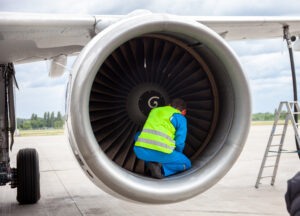Wallentin Hermann vs Alitalia
Home > Wallentin Hermann vs Alitalia
Introduction
Regulation (EC) No 261/2004 (Passenger Rights Regulation, hereinafter referred to as the EU Air Passenger Rights Regulation) grants passengers compensation and assistance under certain conditions when they are affected by flight irregularities such as denied boarding, flight cancellation, or long delays. The amount of compensation is based on the distance of the flight. If the conditions for compensation are met, it amounts to:
- for distances up to 1,500 km: €250 per passenger,
- for all flights within the EU over a distance of more than 1,500 km: €400 per passenger,
- for all other flights over a distance between 1,500 km and 3,500 km: €600 per passenger.
An airline can only be exculpated from this in narrowly defined cases. It is only exempt from paying compensation under Article 7 if the conditions of Article 5(3) are met, meaning it must demonstrate that:
- an “extraordinary circumstance” exists,
- the cancellation or long delay is due to such a circumstance, and
- it has taken all reasonable measures to avoid the consequences of the cancellation (and long delay).
However, the regulation does not provide a definition of the terms “extraordinary circumstance” and “reasonable measures.” The Court of Justice of the European Union (CJEU) changed this in the case of Wallentin-Hermann.
Background of the Case
The plaintiff booked seats for herself and her family on an Alitalia flight from Vienna to Brindisi via Rome. Departure from Vienna was scheduled for 06:45 on 28.06.2005, with arrival in Brindisi the same day at 10:35. After check-in, and just five minutes before the scheduled departure time of the flight from Vienna to Rome, passengers were informed that their flight was cancelled. The cancellation was due to a complex engine failure in the turbine, which had been discovered during an inspection the evening before. Alitalia was informed of this at 01:00 on the night before the flight. The repair of the aircraft, which required the procurement of spare parts and the dispatch of technicians, was completed on 08.07.2005. The passengers were rebooked on a flight with another airline to Rome, but they missed their connecting flight to Brindisi. They finally reached Brindisi at 14:15.
The plaintiff demanded compensation from Alitalia for the cancellation of her flight, including a payment of €250.00 under Article 5(1)(c) and Article 7(1) of Regulation (EC) No. 261/2004.
In the first instance, the Vienna Commercial Court granted her request for compensation, among other things, stating that the technical faults of the affected aircraft did not constitute “extraordinary circumstances” within the meaning of Article 5(3) of Regulation No. 261/2004, exempting the obligation to pay compensation. Alitalia appealed this decision to the Vienna Commercial Court, which referred the case to the CJEU for a preliminary ruling on the interpretation of Article 5(3) of the EU Air Passenger Rights Regulation.
Key Points
In the landmark decision “Wallentin-Hermann,” the CJEU established the fundamental standards by which these terms are to be interpreted.
- Extraordinary circumstances are those that lie outside of what is typically associated with or could be associated with the operation of passenger transport in air travel. "Extraordinary circumstances" are thus events that, by their nature or cause, are not part of the normal exercise of the activity of the airline concerned and are not actually controllable by it, with these two conditions being cumulative and their existence to be assessed on a case-by-case basis.
- What measures are reasonable for an airline in this context is determined by the circumstances of the individual case. The airline must demonstrate in each case that, using all available personnel, material, and financial resources, it would not have been possible without causing unbearable sacrifices in view of the company's capacities at the relevant time to avoid the extraordinary circumstances it faced and which led to the cancellation of the flight.
In addition to these still relevant findings, the CJEU also addressed the question of the relationship between the Montreal Convention and the EU Air Passenger Rights Regulation. Due to the now only doctrinal relevance of this question, we will not address it further here.
Outlook
The principles clarified in “Wallentin-Hermann” have long since become part of everyday judicial practice. The motivation of the CJEU is clear: it wanted to put a stop to the somewhat too generous interpretation of the narrowly defined criterion of “extraordinary circumstances” at the time. The courts embraced this idea and expanded on it. As a result of this development, delays due to refuelling or problems with the availability of ground handling or flight personnel now share the fate of “engine failures.” The reason behind this is quite straightforward: it falls within the airline’s sphere of risk whether its aircraft are fully operational. The practice did not stop there. Courts extend this idea (mostly relying on the somewhat fitting recital 6 of the regulation) to any activity that an airline could theoretically perform. Handling of baggage and aircraft maintenance, for example, could also be done by the airline itself, which is why the activity of the airport is considered the work of the airline and therefore within its control. This is particularly relevant for the recurring de-icing of aircraft in winter or delays due to ground handling.
Furthermore, regulatory or (perceived) frequently recurring measures are now also considered framework conditions for air travel by the judiciary. It must be convincing under constant conditions that affect every airline without exception. These include so-called “night flight bans” or nearly ubiquitous climatic conditions (such as freezing temperatures in winter). This development becomes difficult when it contradicts the rule/exception ratio in the wording of the recitals:
Recital 14 of the regulation generally recognises “extraordinary circumstances” in weather conditions and safety risks that are not compatible with the operation of the relevant flight. The legislator likely recognised that humanity has always been subject to weather conditions since the beginning of time. Therefore, he restricted the “rule of exception” to weather conditions that make the execution of a flight no longer justifiable. This is consistent because weather always possesses an unpredictability for humans. Planning for such things in daily business is simply not entirely reliable. The legislator’s perspective here was therefore on air travel in general, not on business on individual routes or airports. Nevertheless, some courts now go so far as to deny certain weather phenomena, either in specific regions or generally (especially thunderstorms), the character of an extraordinary circumstance. For an airline, this means it must present in these cases the conditions under which certain weather phenomena arise and, if necessary, the geographical conditions of airports and flight routes in a well-founded manner. If geography particularly favours certain weather conditions, the airline must either describe planning measures to mitigate the effects (which will rarely be possible with geographical conditions) or explain to what extent the weather conditions were not favoured by the geographical location or the court does not understand the corresponding weather correctly or too broadly.
This must be countered. For airports located in geographically unfavourable locations, incentives are thus created to disconnect them from the supply network because an airline would effectively be exposed to liability for a guarantee in such airports. An airline does not always have a choice in such cases.
Also problematic is the development regarding strikes. Even though Recital 14 generally recognised these as extraordinary circumstances, this can de facto only be said for a strike by security personnel and air traffic controllers – both tasks in the hands of the state. In the case of all other strikes, courts usually arrive at them through the attribution to framework conditions of air transport – either because airport personnel were affected or because labour and collective bargaining conditions (sometimes also company-wide) belong to the general economic conditions of a company. This cannot be reconciled with a genuinely air traffic-oriented understanding and was not intended as such according to Recital 14.
Finally, attention should be drawn to the measures of air traffic management laid down in Recital 15. Last year, the average delay of a flight due to air traffic control regulations (similar to the “record flight year” 2019) was 1.8 minutes. This remarkably low number is due to the fact that air traffic control receives detailed flight plans in advance and efficiently arranges aircraft routes with various flight sectors. The system works so well that delays due to regulatory measures in view of aviation as a whole are practically the exception – especially those that lead to delays of over three hours or even cancellations. The legislator rightly recognised them as extraordinary circumstances. Judicial practice reverses this rule/exception ratio through mountains of documents, which are further inflated by a litigation practice focused on the fragmentation of flights by legal service providers. It is humanly understandable, but legally unsustainable, to assume in such a perception that delays due to air traffic control measures represent an expected framework condition. Wallentin-Hermann therefore presents an airline with two main challenges in the near future: firstly, it must be able to counter the assumptions of plaintiffs and courts on both a psychological and factual level, and secondly, it must create an awareness of the regulatory background of air travel.
Book an appointment
Fill out our form and one of our experts will get in touch with you.
Share this article
Got a question?
Please complete this form to send an enquiry. Your message will sent to a member of our team.
Related posts

Risk minimisation for internal market distortions: Mandatory declaration obligations under the Foreign Subsidies Regulation (FSR)
The Foreign Subsidies Regulation (FSR) requires companies receiving government subsidies from non-European Union (EU) member states to make prior declarations when participating in

Supply Chain Due Diligence Act
Our client is a company listed in Shanghai Stock Exchange, one of the biggest intelligent power distribution solution providers as well as manufacturer of smart meters, transformers, box-type substations, E-Car charger and photovoltaic inverters.

Wallentin Hermann vs Alitalia
Our client is a company listed in Shanghai Stock Exchange, one of the biggest intelligent power distribution solution providers as well as manufacturer of smart meters, transformers, box-type substations, E-Car charger and photovoltaic inverters.

Purchase of insolvency assets in Germany: Attractive investment opportunities with risks
The purchase of insolvency assets is associated with particular challenges and risks. The assets may be in poor condition, require significant investment in repairs and maintenance and may have hidden liabilities, such as environmental liabilities, which can lead to unexpected costs. What should you consider during due diligence and how do you successfully manage the regulatory scrutiny?


